Solving a 3 by 3 System of Equations Using Matrices
by kegmastercardboard in Workshop > Science
4564 Views, 0 Favorites, 0 Comments
Solving a 3 by 3 System of Equations Using Matrices
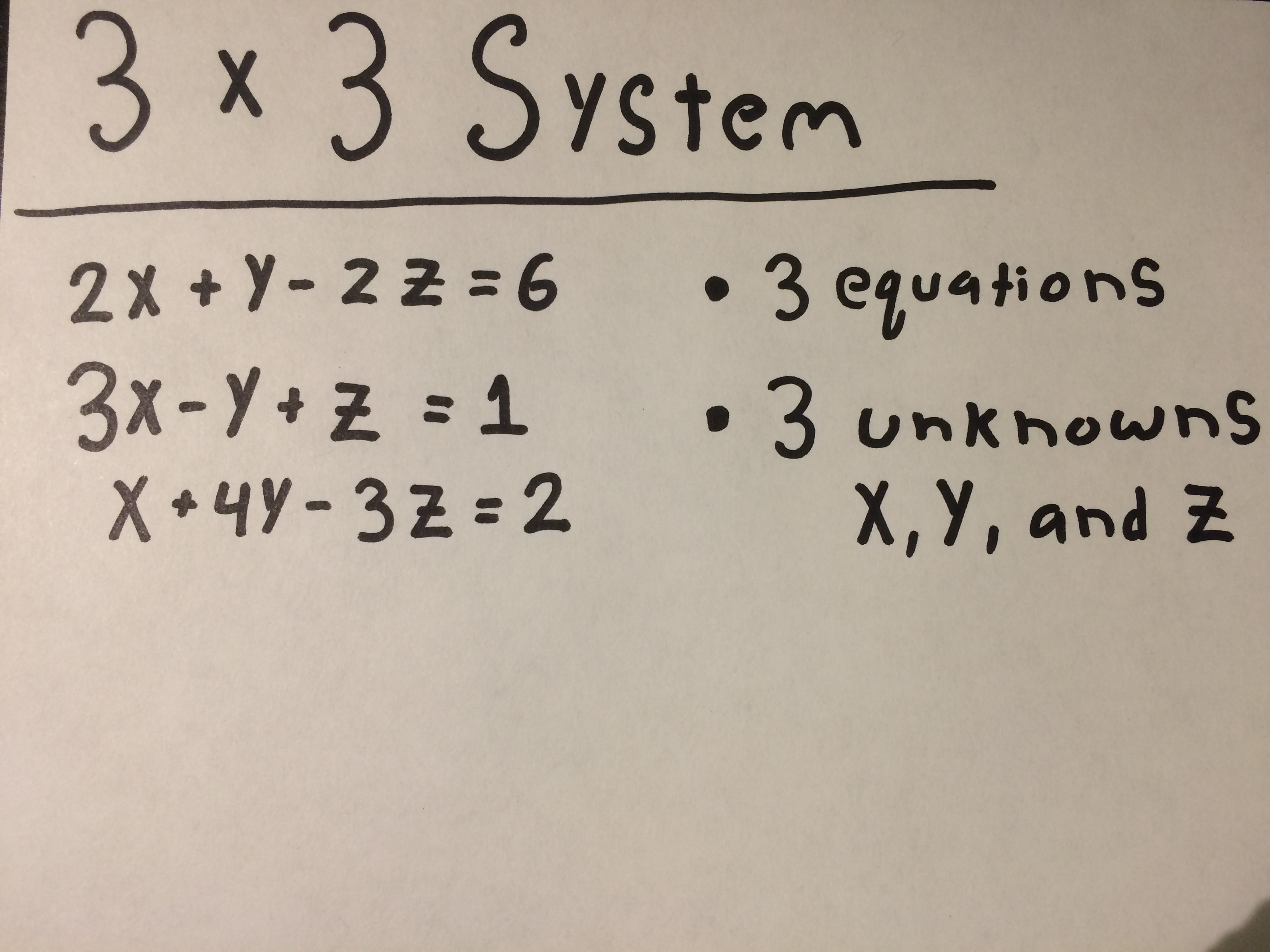
The goal if this instructable is to teach someone how to solve a 3 by 3 system of equations. A 3 by 3 system of equations consists of 3 equations with 3 unknowns. In this example, we will be using the letters x, y, and z to represent our unknown quantities, but you may use any 3 letters. Solving a system means you will find the quantities that the three letters represent.
These instructions are written with the assumption that you have the basic algebraic skills needed to rearrange an equation
Understanding Key Terms
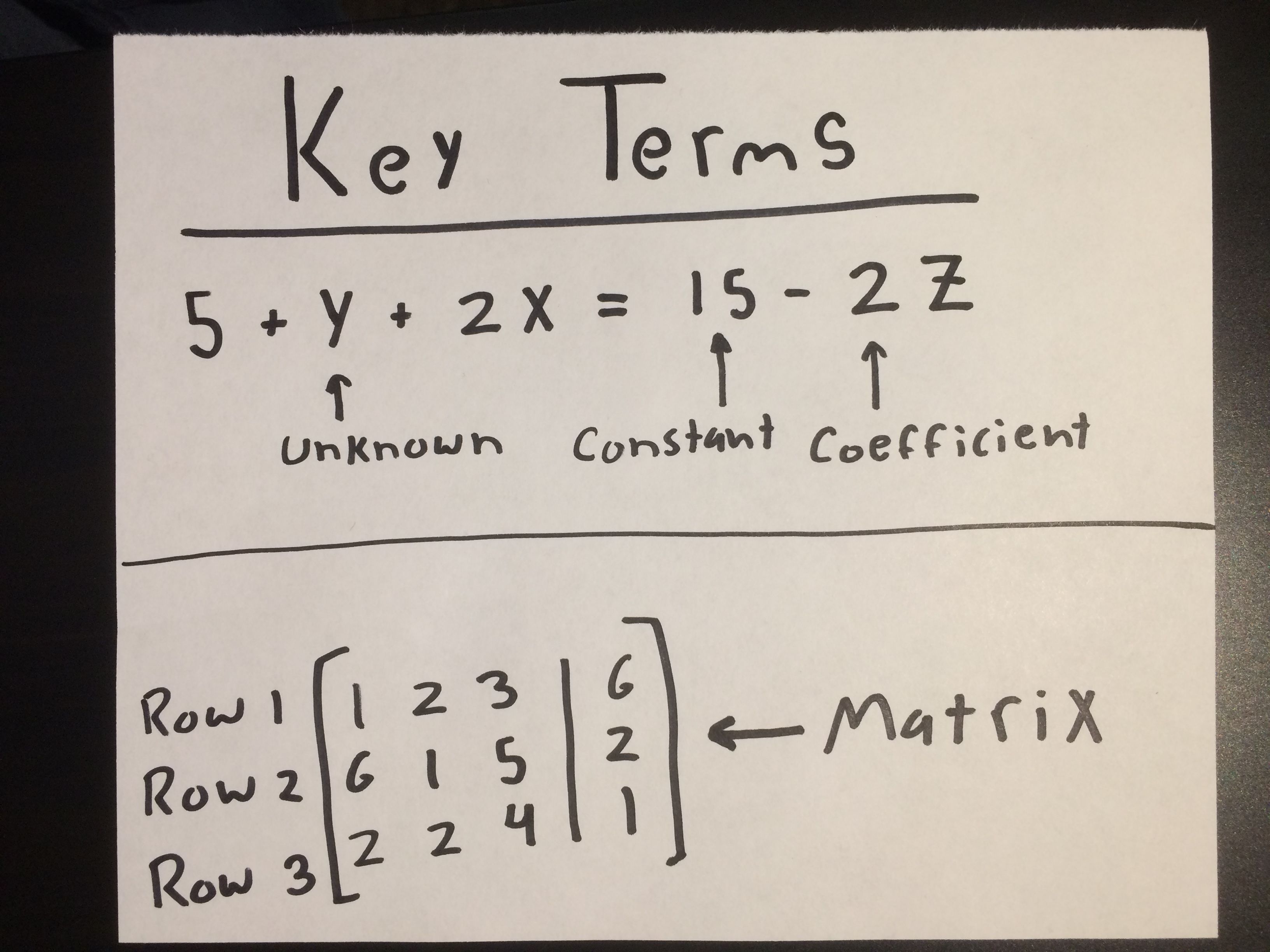
Throughout this instructable, there will be a few technical terms used that may be unfamiliar to the reader.
Here is a list of those keywords and their definitions.
Unknown: A quantity that is represented by a letter.
Coefficient: A multiplier of an unknown.
Constant: A number that has no unknown attached to it.
Matrix: A method of organizing information from an equation.
Setting Up Your Matrix
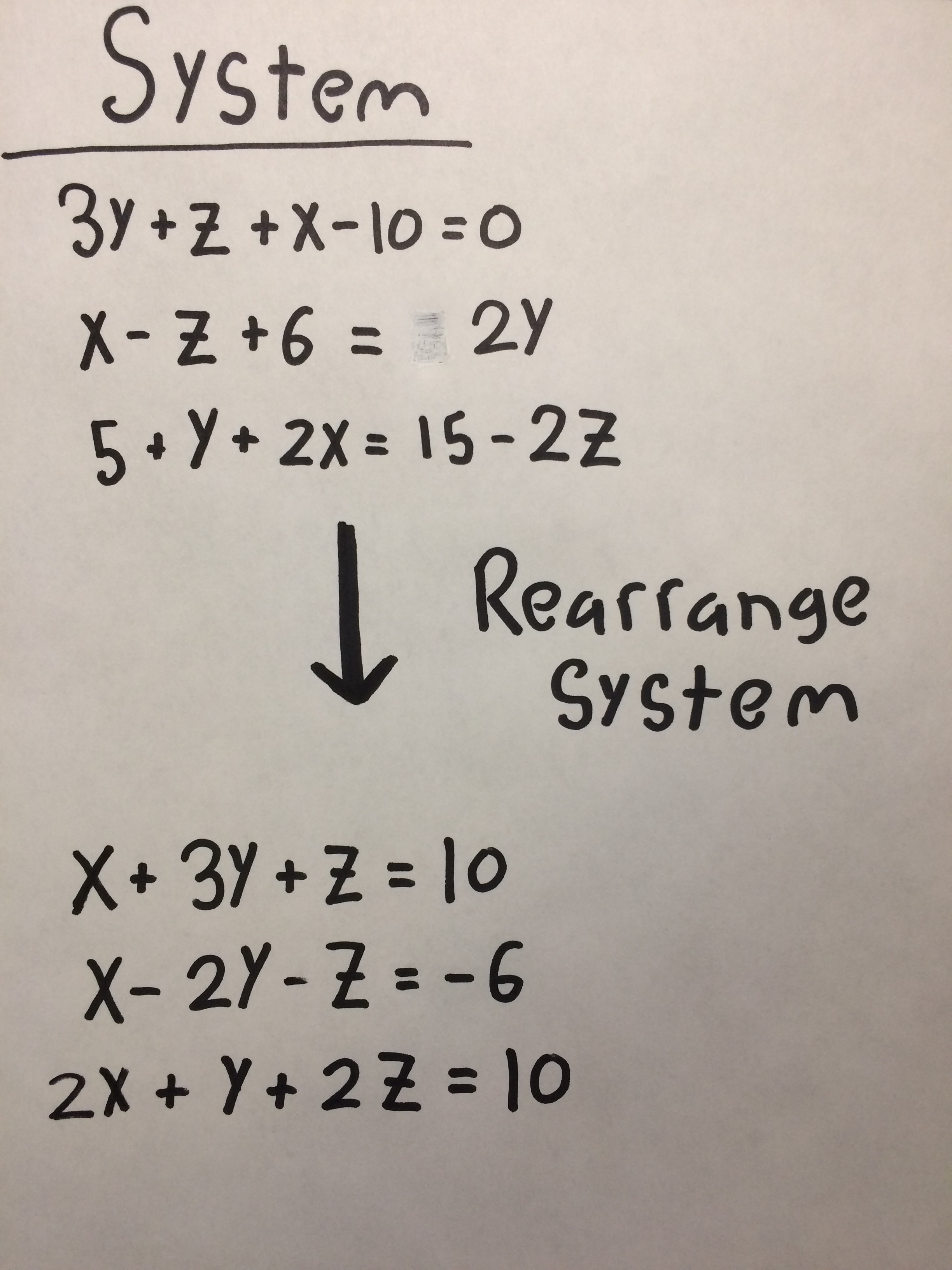
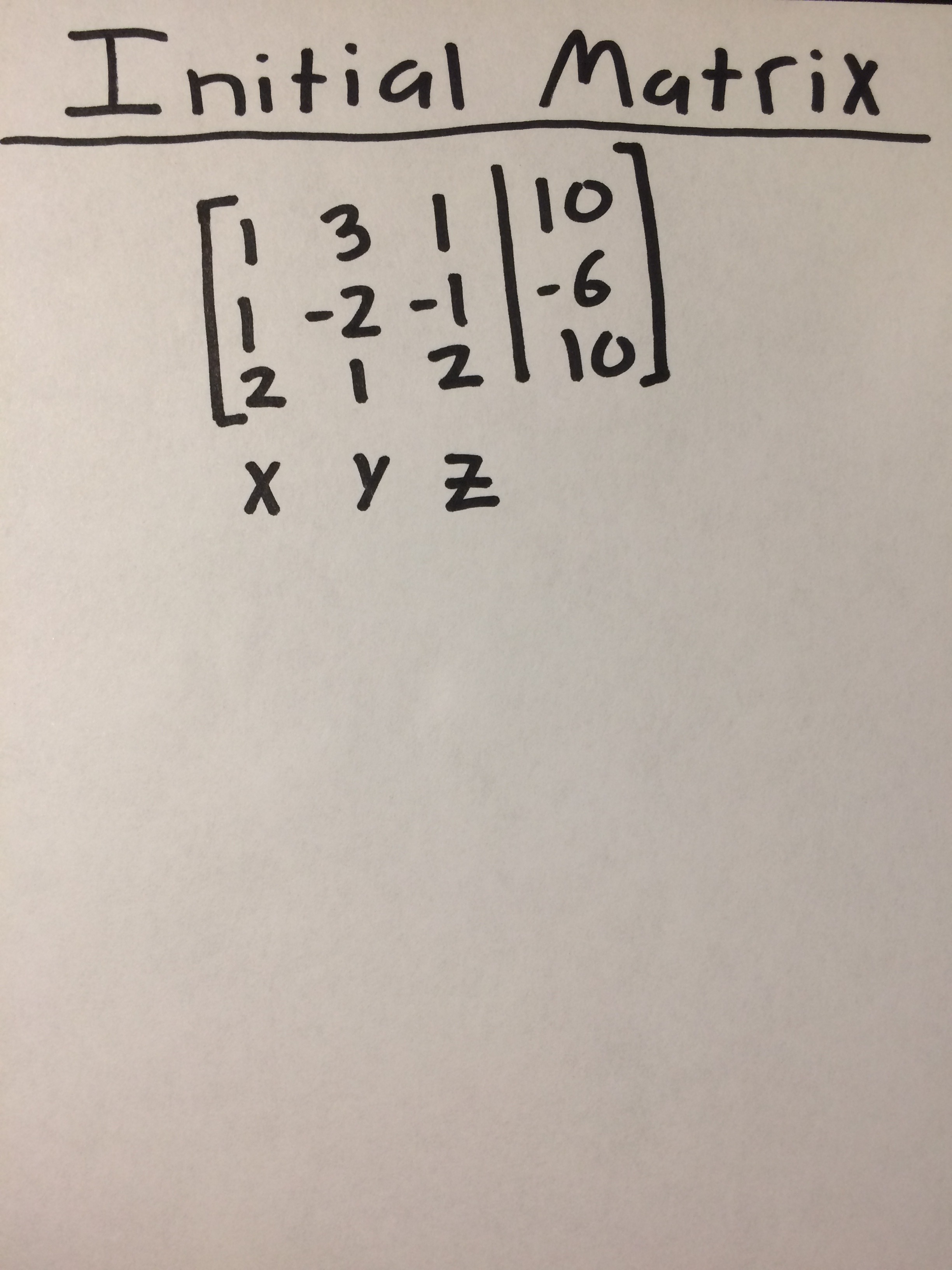
After you find or create a system of equations you want to solve you will need to rearrange the equations so that they are in the form x+y+z = constant (see image). Once your equations are in this form, you will need to rewrite them in matrix form. Each row of the matrix represents x, y, z, and constant respectively.
Learning the Operations You Can Use
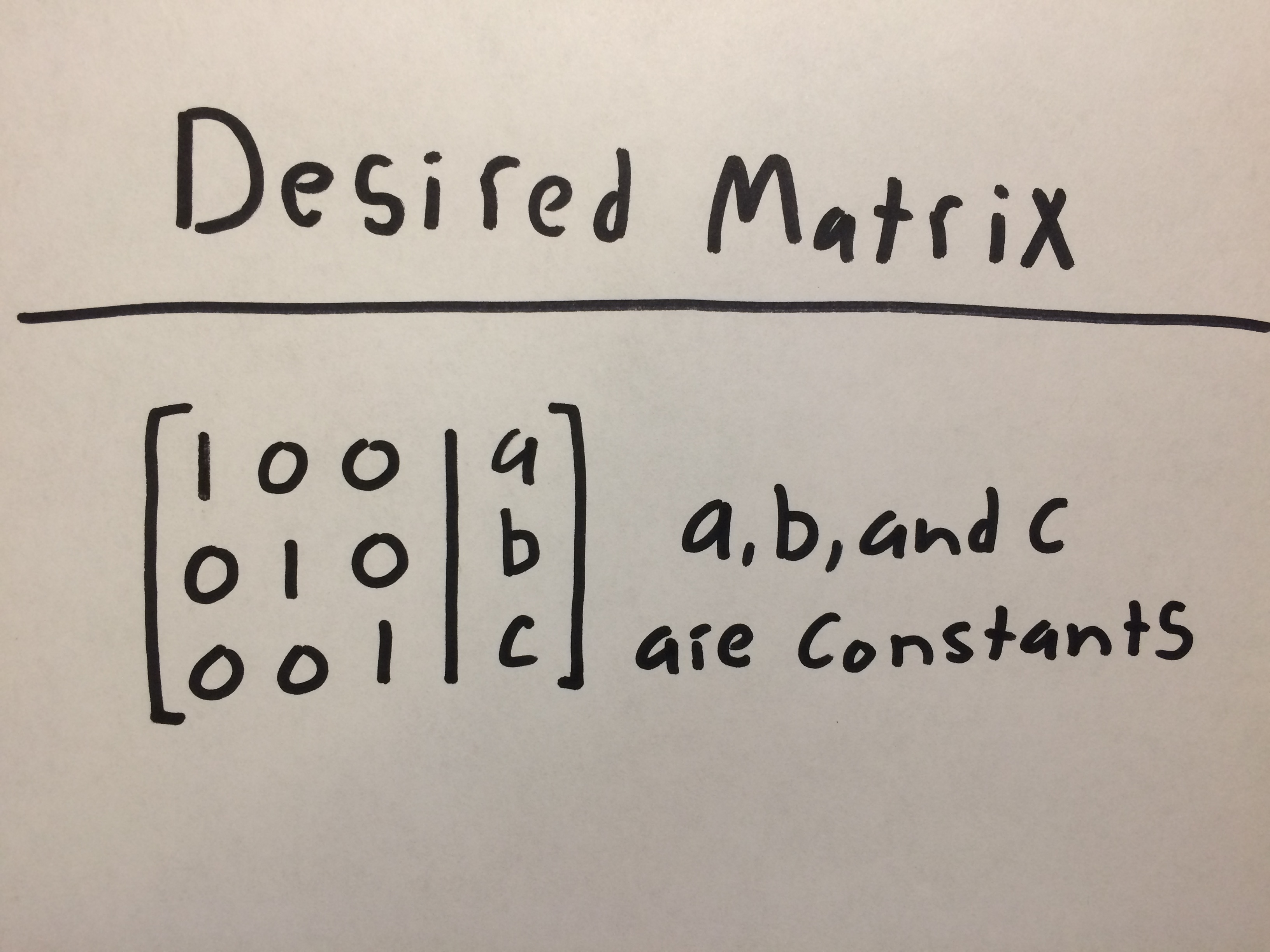
Once you have written your equations in matrix form, your goal will be to use the 4 rules to produce the DESIRED MATRIX (see image). You will be able to use the 4 rules to produce a new matrix until you produce the desired matrix. you will start with your original matrix and each new matrix will be produced by performing operations on the previous matrix.
The 4 Rules
- Multiply each number in a row by any constant
- Add any 2 rows
- Subtract any 2 rows
- Swap the position of any 2 rows
All of these rules can be used alone or in combination with each other.
The row you wish to change must be involved in the operation used to produce it.
Producing the Desired Matrix
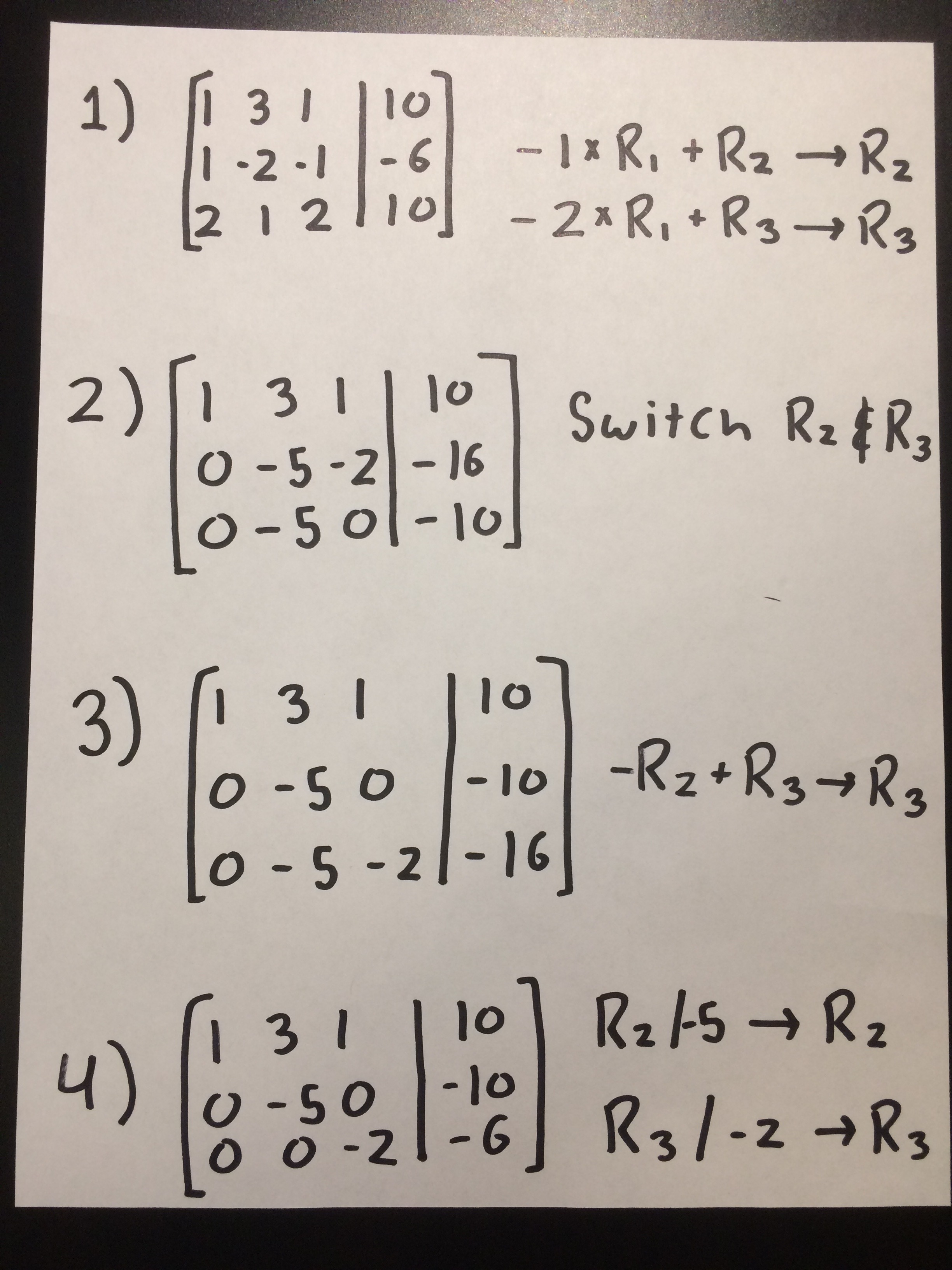
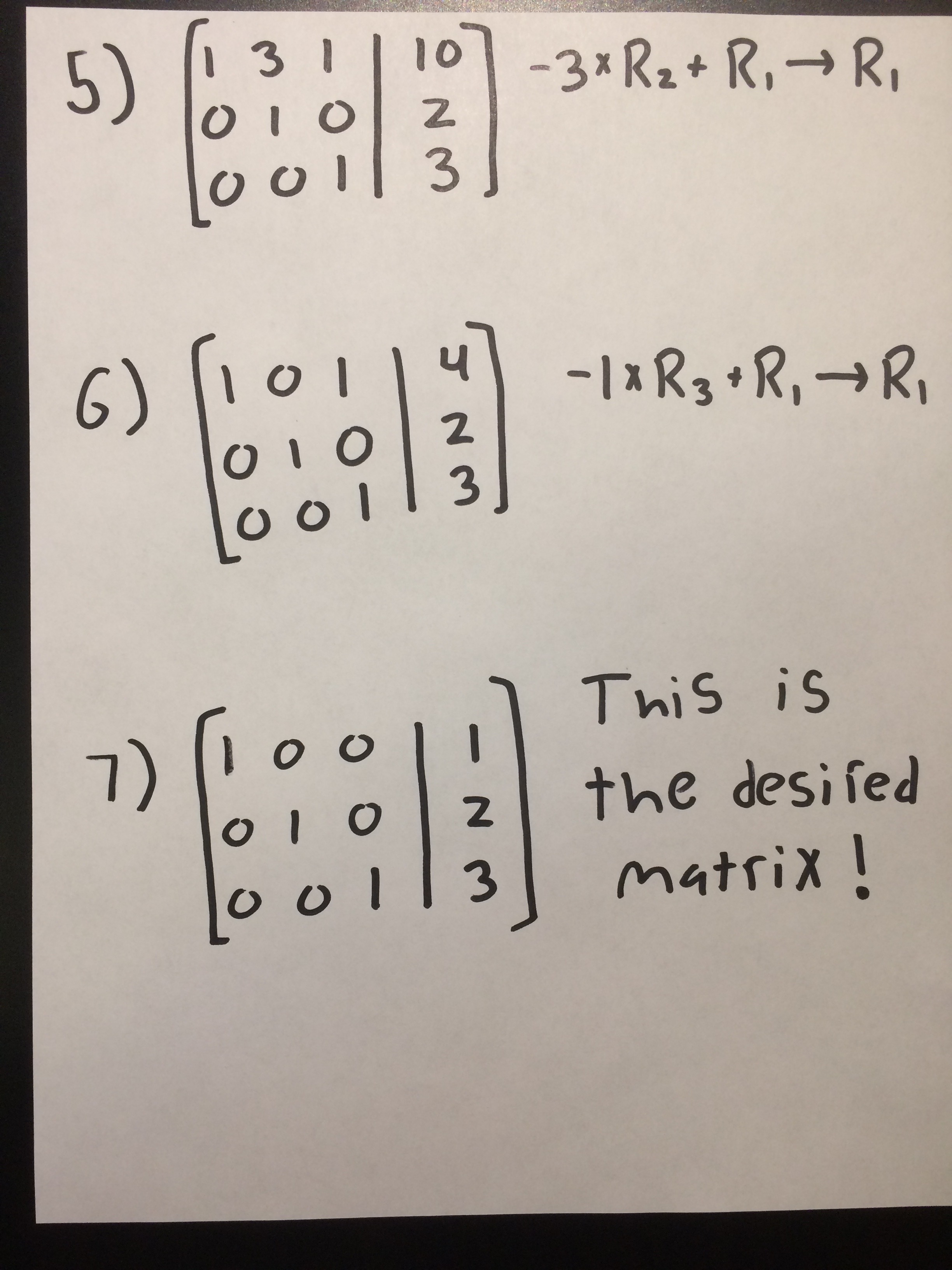
These Images show a step by step guide of how I use the 4 rules to produce the desired matrix. The procedures to the right of each matrix show what I did to produce the rows for the next matrix. R1, R2, and R3 represent row 1, row 2, and row 3 respectively. The arrow after the operation specifies which new row this operation is producing.
Writing Your Solutions

Once you have produced the desired matrix, you are almost finished! The constant in R1 represents the value for x, the constant in R2 represents the value for y, and the constant in R3 represents the value for z. The final step is to write the constants in the form x=a, y=b, and z=c.